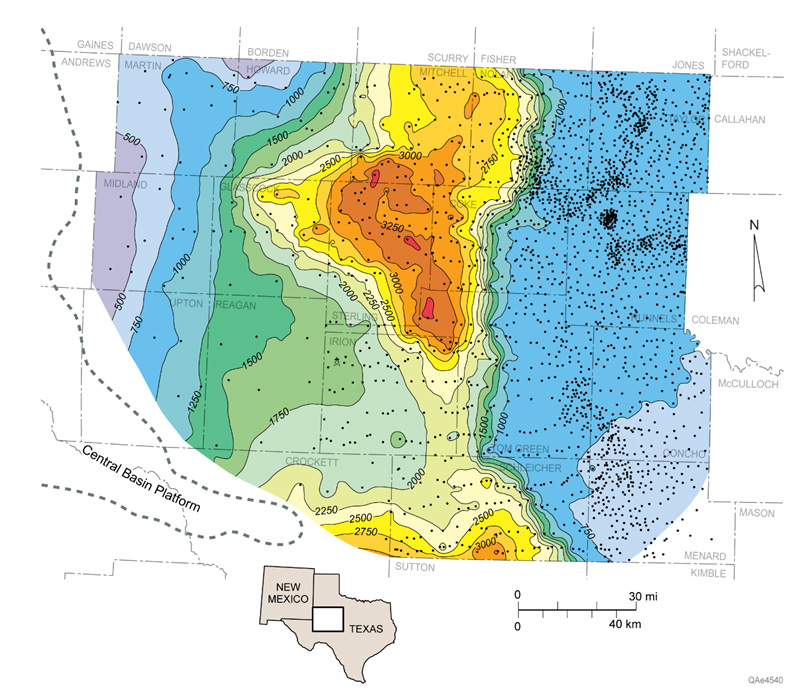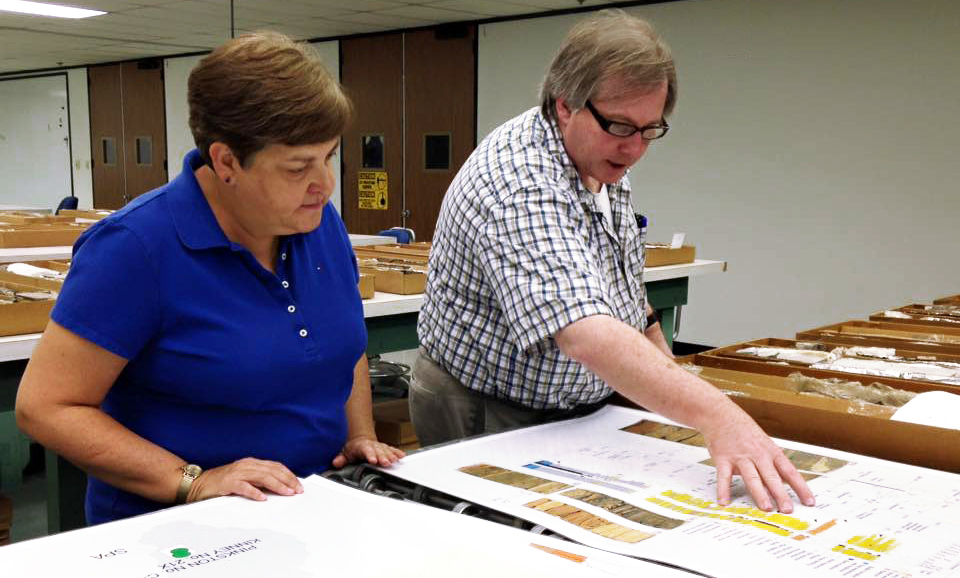The STARR Group will present an all-day core workshop in October, 2017 in Austin, Texas at the Bureau of Economic Geology. The core workshop, titled ”Shelf-to-Basin Architecture, Depositional Systems, and Facies Variability of the Southern Eastern Shelf of the Permian Basin”, will be an in-depth overview of shelf, shelf-edge, and slope depositional facies characteristics, stratigraphic variations, and sedimentation trends of the Missourian Canyon Group and Virgilian–Wolfcampian Cisco Group across the southern Eastern Shelf and the adjacent Midland Basin. This study is based on detailed analysis of more than 2,200 well logs and approximately 10 cores within a 19-county area of West Texas. Attendees will get a hands-on view of key cores with a detailed review of depositional environments from source to sink—fluvial incised valley fill, shelf, shelf edge, slope, and slope-to-basin-floor transition. The core workshop will be supplemented with lectures that provide insight into Permian Basin depositional systems and their relationship to oil and gas production.
Sponsored by the Austin Geological Society
October 24, 2017 9:00 a.m. - 3:00 p.m.
Location: Austin Core Research Center, 10100 Burnet Road, Austin, Texas 78758; (512) 471-1534
Registration: Please contact Sigrid Clift at sigrid.clift@beg.utexas.edu; Limited to 30 participants; Registration fee: $30.00 (Includes morning refreshments and lunch plus presentations on CD and handouts, but not $3 parking fee).
This all-day workshop offers an in-depth overview of shelf, shelf-edge, and slope depositional facies characteristics, stratigraphic variations, and sedimentation trends of the Missourian Canyon Group and Virgilian–Wolfcampian Cisco Group across the southern Eastern Shelf and the adjacent Midland Basin. Regional depositional features of equivalent strata of the northern half of the Eastern Shelf are well documented in the works of Frank Brown and others. However, the facies architecture of the southern half of this major petroleum province previously had been only incompletely examined. This study is based on detailed analysis of more than 2,200 well logs and approximately 10 cores within a 19-county area of West Texas. Attendees can get a hands-on view of key cores with a detailed review of depositional environments from source to sink—fluvial incised valley fill, shelf, shelf edge, slope, and slope-to-basin-floor transition. Core descriptions, cross sections, and lithofacies maps document temporal and spatial variations in progradational sediment wedges and indicate that significant volumes of sediments were delivered into the Midland Basin where a thick succession of both siliciclastic and carbonate reservoirs offers numerous opportunities for oil and gas production.
Presenters:
Tucker F. Hentz, William A. Ambrose, Robert W. Baumgardner, and Fritz Palacios

Isochore map of the Wolfcampian upper Cisco Group. Thickest strata coincide with a depocenter of much-thickened slope systems comprising siliciclastic and carbonate debris-flow deposits and thick sections of slope mudrock. Slope sandstones and limestones are among the most productive facies of the southern Eastern Shelf.

